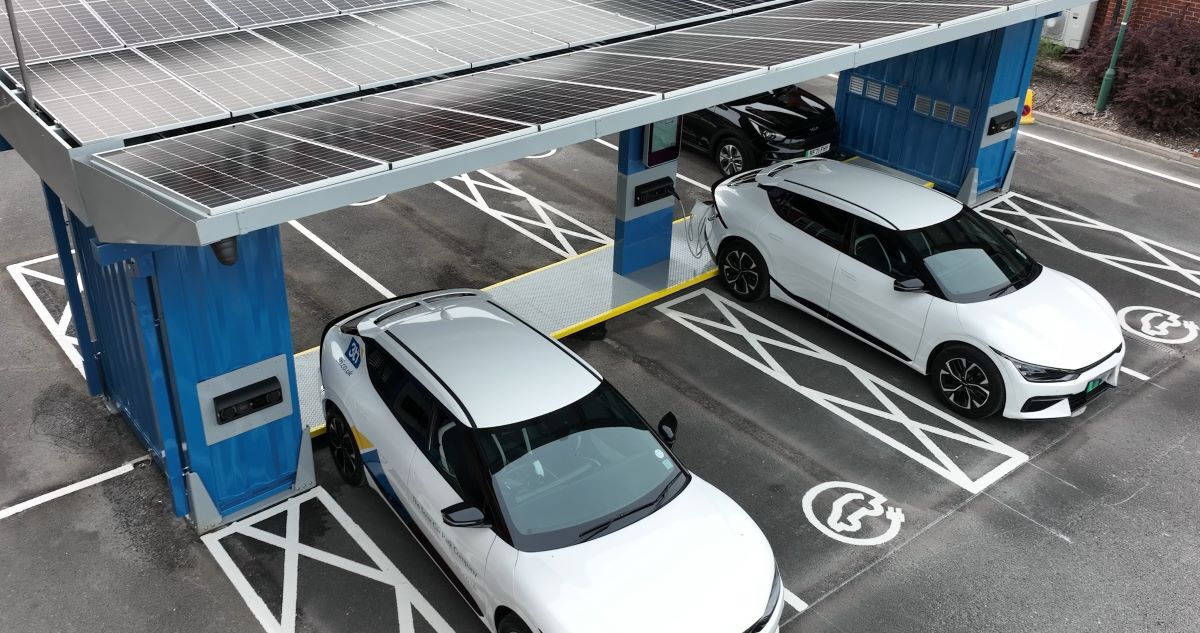As electric vehicles (EVs) continue to gain popularity worldwide, the demand for accessible and convenient charging solutions is growing. One innovative approach that is reshaping the EV charging landscape is mobile EV charging. Unlike traditional fixed charging stations, mobile EV chargers provide on-the-go power, offering flexibility and convenience for EV owners.
This article explores the concept of mobile EV charging, its advantages, market opportunities, and challenges, as well as its potential to revolutionize the way we power electric vehicles.

Mobile EV charging, also referred to as portable EV charging, on-demand charging, or roving charging, is a dynamic solution that delivers electricity to EVs without the need for permanent infrastructure. These chargers are designed to be transportable, allowing them to be moved between locations or directly to vehicles in need of power.
Unlike stationary charging stations, which require fixed installations, mobile charging units operate using portable power sources, such as:
Battery-powered charging units (large-scale mobile battery packs)
Generator-equipped charging vans or trailers (providing rapid charging on-site)
Temporary pop-up charging stations (deployed at events, parking lots, or remote areas)
These solutions can be rapidly deployed to areas with high EV traffic, emergency roadside assistance scenarios, or locations where installing permanent chargers is impractical.
One of the biggest hurdles in EV adoption is the lack of charging infrastructure, particularly in rural or underdeveloped areas. Mobile EV charging bridges this gap by:
Bringing power directly to EV owners' locations
Serving remote areas where fixed stations are economically unviable
Providing emergency charging for stranded EVs
This flexibility ensures that drivers no longer need to worry about finding a charging station, reducing inconvenience and encouraging more people to switch to electric vehicles.
Mobile charging units can be quickly transported and set up in high-demand areas, making them ideal for:
Events (festivals, sports games, conferences)
Fleet operations (delivery vans, taxis, rental cars)
Construction sites or temporary workplaces
Additionally, these solutions are scalable—businesses can increase capacity by adding more mobile units without costly construction or infrastructure upgrades.
“Range anxiety”—the fear of running out of battery before reaching a charger—remains a major concern for EV drivers. Mobile charging helps alleviate this by:
Offering roadside assistance for depleted EVs
Providing charging in areas with sparse fixed infrastructure
Supporting long-distance travel with strategically placed mobile units
By expanding charging availability, mobile solutions boost consumer confidence in EVs.
For businesses, mobile EV charging presents a lower upfront investment compared to installing permanent stations. Companies can:
Start small with a few mobile units and expand as demand grows
Avoid high real estate and construction costs
Generate revenue by offering on-demand charging services
The global EV market is expanding rapidly, with millions of new electric vehicles hitting the roads each year. This growth creates significant opportunities for mobile charging providers:
With EV adoption rising, drivers need alternatives to fixed charging stations. Mobile charging fills this gap by serving:
Urban areas with limited parking/charging access
Rural regions with underdeveloped infrastructure
Commercial fleets requiring on-site charging
Mobile charging is ideal for:
Event Charging: Concerts, festivals, and sports venues
Roadside Assistance: Towing companies and emergency services
Fleet Management: Delivery and logistics companies
Governments and corporations are investing in sustainable mobility solutions. Mobile chargers powered by renewable energy (solar, wind, or battery storage) align with global decarbonization goals.
Despite its potential, the mobile EV charging industry faces several hurdles:
Starting a mobile charging business requires:
Purchasing charging vans, trailers, or portable units
Investing in high-capacity batteries or generators
Maintenance and operational costs
Different regions have varying regulations on:
Energy distribution and mobile power solutions
Safety standards for portable charging
Permits for operating mobile charging services
Companies must navigate these legal complexities to ensure compliance.
While mobile charging offers flexibility, fixed networks (like Tesla Superchargers) are expanding rapidly. Mobile providers must differentiate themselves by targeting underserved areas and niche markets.
Current battery storage solutions may have limited capacity, requiring frequent recharging. Advances in solid-state batteries and fast-charging technology could mitigate this issue in the future.
As EV adoption accelerates, mobile charging will play a critical role in supporting the transition to electric mobility. Key trends shaping its future include:
AI-Powered Charging Networks: Smart systems that dispatch mobile chargers based on real-time demand.
Vehicle-to-Grid (V2G) Integration: Using EVs as mobile power sources during emergencies.
Renewable-Powered Mobile Units: Solar or hydrogen-fueled charging solutions for zero-emission power delivery.
Mobile EV charging represents a game-changing solution for the electric vehicle industry, offering unmatched flexibility, scalability, and convenience. While challenges like high startup costs and regulatory hurdles exist, the growing demand for accessible charging ensures a bright future for this innovative technology.
As infrastructure evolves, mobile charging will become an essential component of the global EV ecosystem, helping to eliminate range anxiety and accelerate the shift toward sustainable transportation.
For businesses and entrepreneurs, now is the time to explore opportunities in this emerging market—before it becomes the new standard in EV power delivery.
